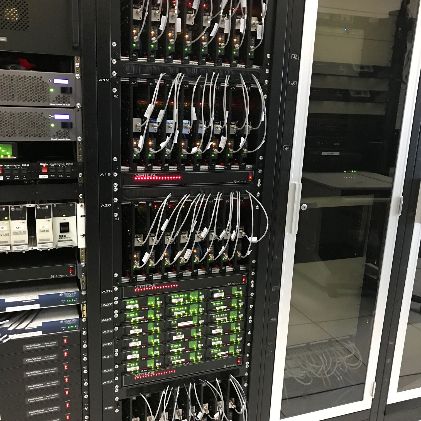
Ask any experienced AV user what gives them the most headaches, and DC power problems will always figure in the top 3! While many other AV pain points have been addressed with technological innovation, DC power has mainly remained static in terms of evolution, with the power adapter and single or dual voltage rack mount power units being your only options until now.
The good news is that more sophisticated, yet affordable, DC power solutions are now beginning to emerge for Audio Visual applications. However, with added sophistication comes the risk of choosing a sub-optimal solution, which is why we have written this handy three-point guide.
Choose mission-critical DC power
It makes total sense to choose reliable, clean, dependable DC power for your mission-critical installations in healthcare, higher education,broadcast, and control rooms when you are working around the clock; seven days a week, 24 hours a day, 365 days a year.
This is why you should be seriously questioning any system design decisions that rely on the humble wall wart to keep your installation running. Other solutions are available including rack mount power supplies that can supply power to a number of devices from a single unit. Check that any options you are testing include surge and overload projection to protect your mission-critical devices .Also, check the Median Time Between Failure (MTBF), as this will provide the best indicator of how reliable the power supply unit will be. MTBF’s are far more useful than relying on warranty lengths, because you can’t risk waiting for a replacement unit if you suffer a failure – you just want the unit to work, period!
Be prepared for the unusual and go beyond AV voltages
Not all rack mount DC power supplies are born equal, so it is worth asking questions about total power output and the number of voltages you can access. Even some larger power units can have limited outputs, and while adding another unit is an option, this adds to project cost and uses expensive rackspace.
To ensure you have enough power overhead, it’s a good idea to use power supply units that supply between 20 and 30 watts per output to allow you to power with confidence. Also, check which voltages you can output. While many “AV only” installs only require 5 or 12 volts, a divergence in the marketplace between AV, IT and Broadcast solutions has seen a demand for other voltages, including 7.5, 13.5, 18 and 24 volts. Using an “AV only” power supply will only add to your issues.
Demand practicality, usability, and expandability
Even if your chosen, rack-mounted power supply has all of the technical features covered, if it can’t be mounted how you want, it will result in untidy cable management, reduced usability, and wasted rack space. Not all DC power requirements are large enough to require full rack width units.
Therefore, some power supplies are available in half rack and full size, and the power connections can be modular, allowing for system growth over time while also keeping initial project cost lower.
Connection between the original equipment power lead (once the wall wart has been removed) should connect to the rack mount power supply using screwing connectors and with the positive and negative connections clearly shown. These connectors must then have a secure fit into the mains powered power supply.
Want to find out more?
If your next AV, Broadcast or IT installation demands mission-critical performance, multi-voltage power and flexible mounting options, download the full version of this blog.
To find out more, please fill out the form below to download the full version (PDF) of this blog.
